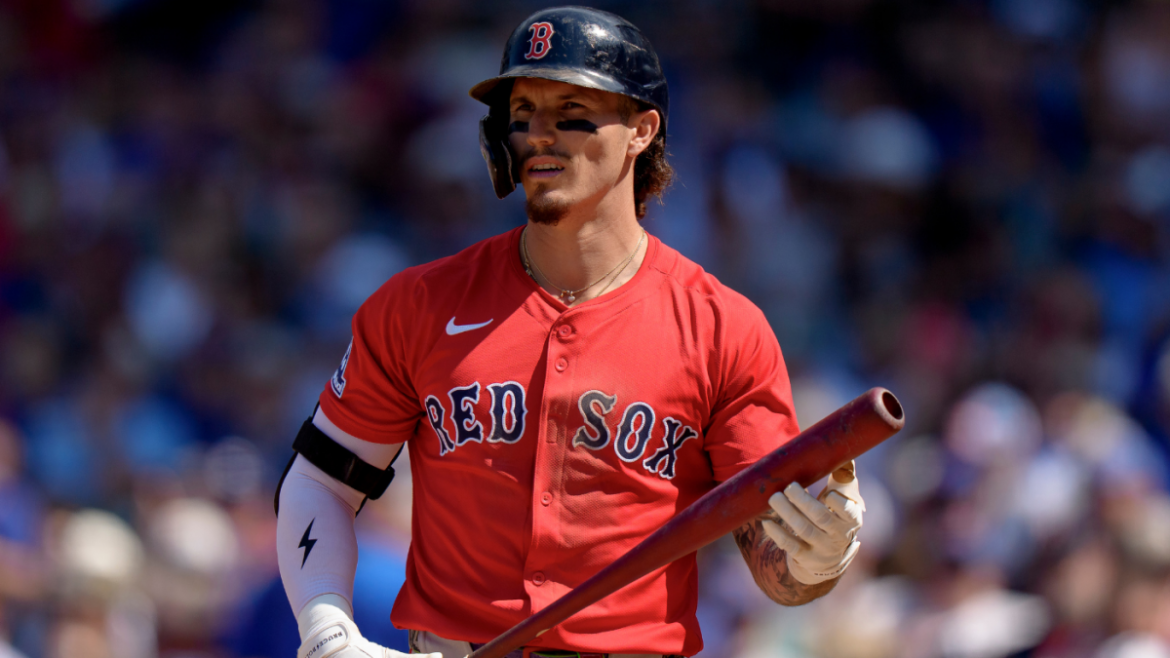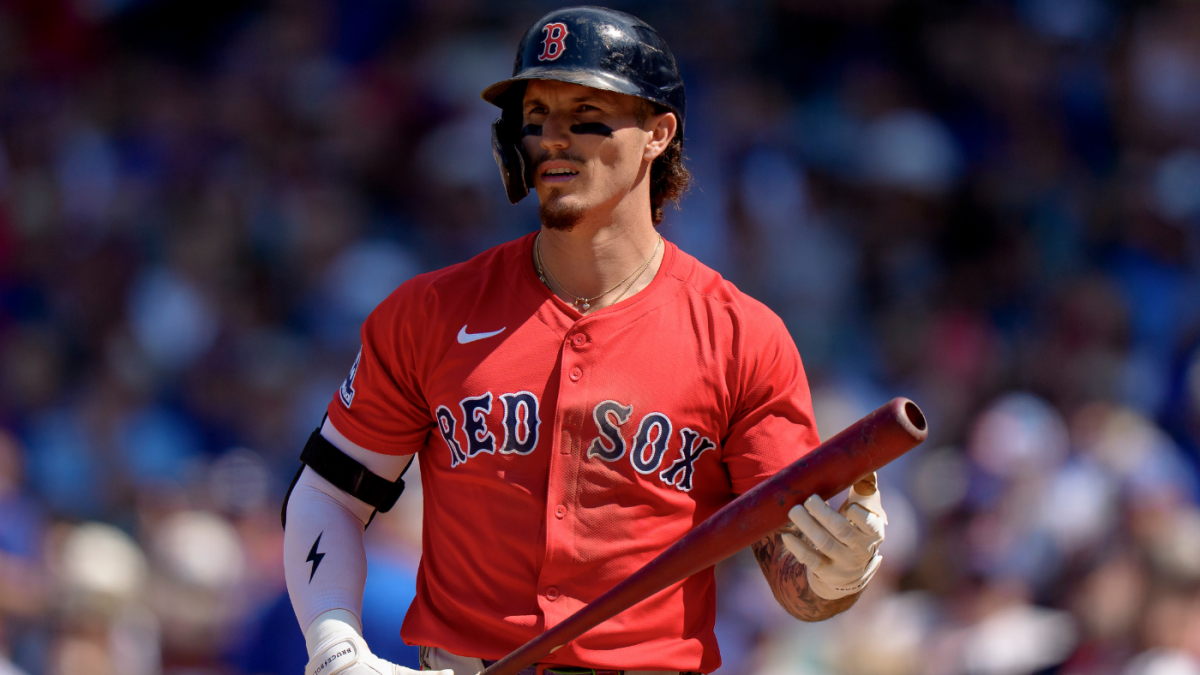The Jarren Duran Trade Dilemma: A Strategic Crossroads for the Boston Red Sox
The Boston Red Sox are at a critical juncture as the MLB trade deadline approaches. The team finds itself in a familiar yet challenging position, balancing the need for immediate improvement with long-term development. At the center of this dilemma is outfielder Jarren Duran, a player whose future with the Red Sox is increasingly uncertain. The question of whether to trade Duran is not just about his potential but also about the broader strategic direction of the franchise. This report explores the complexities of the Duran trade situation, examining the factors driving the rumors, potential landing spots, and the implications for the Red Sox’s short-term and long-term goals.
The Outfield Logjam: A Surplus of Talent
The Red Sox’s current predicament is rooted in an outfield that has become increasingly crowded. The emergence of top prospect Roman Anthony, coupled with the continued development of Ceddanne Rafaela and Wilyer Abreu, has created a logjam that necessitates a difficult decision. Duran, despite his impressive speed and offensive potential, may be the odd man out.
Anthony’s ascent is a significant catalyst. Widely regarded as one of baseball’s top prospects, he is forcing the Red Sox to consider how to best allocate playing time. While he has had a slow start to his major league career, the organization clearly views him as a cornerstone for the future, and consistent at-bats are crucial for his development. Rafaela, known for his exceptional defensive prowess and versatility, is also a valuable asset. Abreu, too, has demonstrated offensive capabilities that make him a viable option.
Duran, on the other hand, has had a more uneven trajectory. While he earned an All-Star nod, his overall performance has fluctuated, and his defensive metrics have been a point of concern. This inconsistency, combined with the rise of other outfielders, has made him a prime candidate to be moved in exchange for addressing other needs.
The Red Sox must weigh Duran’s potential contribution against the value they could receive in a trade. Holding onto him would provide outfield depth and a potentially dynamic offensive weapon, but trading him could net them a significant return in the form of pitching prospects or established arms.
The Pitching Predicament: A Critical Need
The Red Sox’s need for pitching is no secret. While the team has shown flashes of brilliance, consistent, top-tier starting pitching has been an elusive commodity. The organization has struggled to develop homegrown aces in recent years, making external acquisitions a necessity.
Trading Duran could provide the Red Sox with the leverage to acquire a controllable, high-end pitcher. Several reports suggest the Red Sox are actively seeking to bolster their rotation, and they are willing to part with outfield talent to achieve that goal. This strategy aligns with the modern baseball philosophy of prioritizing pitching depth, especially in a division as competitive as the American League East.
Acquiring a top starter would not only improve the Red Sox’s chances of competing in the short term but also provide a foundation for sustained success. A strong rotation can alleviate pressure on the bullpen, shorten games, and create a more consistent winning formula.
The potential return for Duran is a crucial factor in determining whether a trade is worthwhile. The Red Sox need to ensure that any deal brings back a pitcher who can immediately contribute and has the potential to be a long-term asset.
Potential Suitors: Where Could Duran Land?
Several teams have been linked to Duran in trade rumors, each with their own unique needs and motivations. Among the most frequently mentioned are the San Diego Padres, the Cincinnati Reds, and the Atlanta Braves.
The San Diego Padres’ interest in Duran has been well-documented. They are reportedly “enamored” with the outfielder and have been linked to him for more than a month. The Padres are looking to add offensive firepower and speed to their lineup, and Duran fits that profile. Moreover, they have a farm system deep enough to offer the Red Sox a compelling package of prospects.
The Cincinnati Reds are another potential suitor. They are looking to add a left-handed bat to their lineup, and Duran’s speed and ability to play multiple outfield positions make him an attractive target. The Reds are in a rebuilding phase and have a collection of young, controllable pitchers that could interest the Red Sox.
The Atlanta Braves have also been identified as a “best fit” for Duran. The Braves are always looking for ways to improve their roster, and Duran’s offensive potential and speed could be valuable assets. However, the Braves’ farm system is not as deep as some other teams, which could make it more challenging to construct a trade that satisfies the Red Sox.
Other teams, such as the San Francisco Giants, could also be in the mix. The Giants need offensive help and have a history of targeting players with Duran’s skillset. Ultimately, the destination will depend on which team is willing to offer the Red Sox the most appealing package.
Analyzing the Trade Value: What’s Duran Worth?
Determining Duran’s trade value is a complex undertaking. His All-Star caliber skillset certainly has value, but his inconsistency, defensive limitations, and the Red Sox’s outfield surplus all impact his market.
Several factors contribute to a player’s trade value, including age, contract status, performance, potential, and positional scarcity. Duran is 28 years old and is under team control through 2028, which increases his appeal. His offensive numbers, while inconsistent, demonstrate his potential to be a dynamic offensive player. However, his defensive metrics and the Red Sox’s glut of outfielders may depress his value.
The Red Sox will likely be looking for a package of prospects or a controllable pitcher in exchange for Duran. The specific return will depend on the acquiring team’s needs and the quality of their farm system. A potential trade package could include a top-100 prospect, a promising young pitcher, and perhaps a lower-level lottery ticket.
It’s also possible the Red Sox explore a three-way trade to maximize their return. This scenario could involve a third team with a specific need that aligns with the Red Sox’s or the acquiring team’s assets.
The Risks and Rewards: A Delicate Balancing Act
Trading Duran involves both risks and rewards. On the one hand, the Red Sox could acquire a valuable asset that helps them address their pitching needs and compete for a playoff spot. On the other hand, they could be trading away a player who blossoms into a star elsewhere, or they could fail to acquire a suitable replacement.
The Red Sox must carefully weigh these risks and rewards before making a decision. They need to thoroughly evaluate the potential trade partners, assess their own needs, and determine the long-term implications of any deal. A successful trade could propel the Red Sox forward, while a failed trade could set them back.
Conclusion: Navigating the Deadline
The Jarren Duran trade saga highlights the complexities of managing a major league baseball team. The Red Sox must balance their short-term goals with their long-term vision, and they must make difficult decisions about which players to keep and which to trade. The Duran situation is a microcosm of these challenges. Trading Duran presents both an opportunity and a risk. It’s an opportunity to bolster the pitching staff and accelerate the team’s rebuild. It’s a risk of trading a valuable offensive talent who could find success elsewhere.
The Red Sox must proceed cautiously and strategically. They need to identify the best possible trade partners, conduct thorough evaluations of potential acquisitions, and make a decision that aligns with their long-term goals. The trade deadline is a crucial juncture for any team, and the Red Sox’s handling of the Duran situation will be a significant indicator of their overall strategy. The coming days will be pivotal in determining the Red Sox’s direction, and the future of Jarren Duran.





